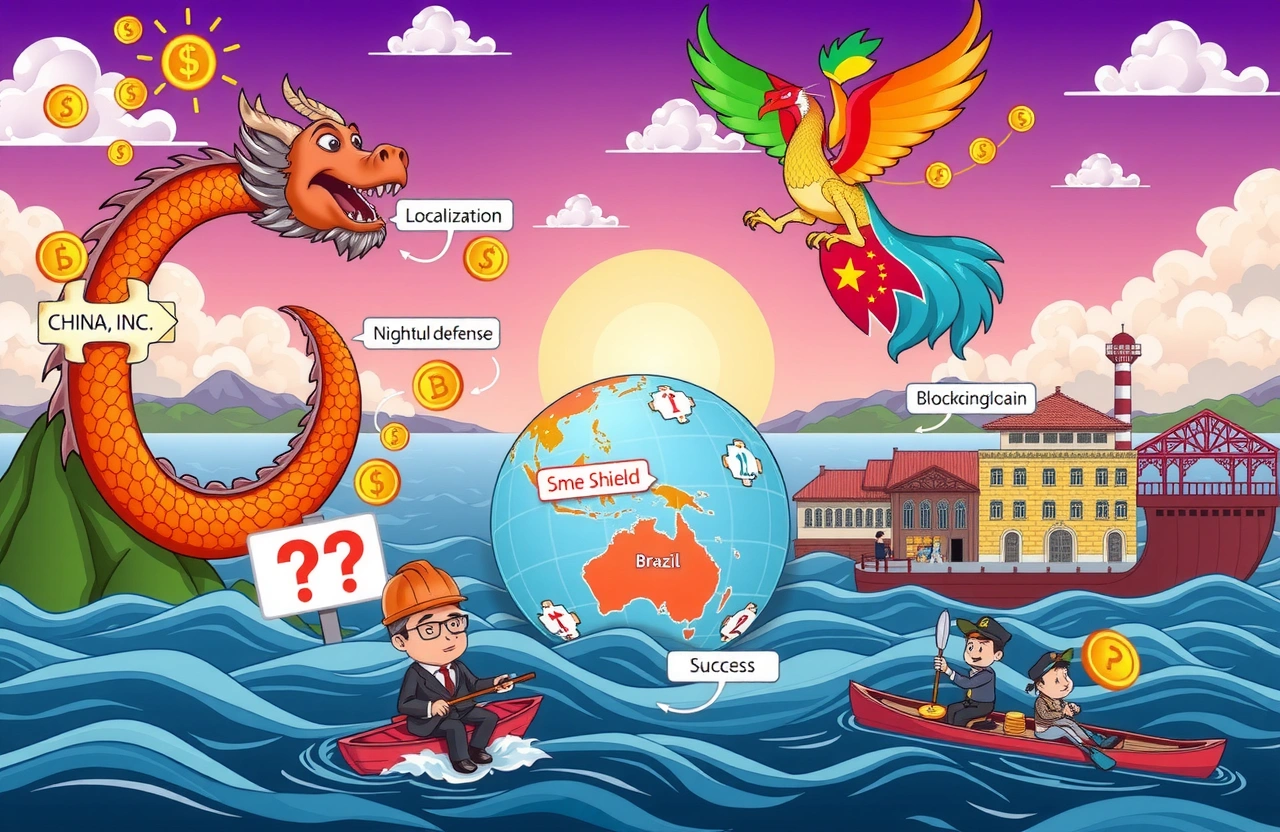The Rising Tide of Global Expansion
At the 2025 China Enterprise Globalization Forum in Shenzhen, startling statistics emerged: China’s overseas investment stock exceeded $2.9 trillion over three decades, supplemented by over $3 trillion in contracted international engineering projects. Yet amid fierce domestic competition where “go global or perish” becomes a corporate mantra, former Ministry of Commerce official Ma She issued a sobering counterpoint: many businesses rush overseas unprepared, risking “perish upon going global.” As supply chains reconfigure worldwide, this investigation reveals practical pathways for sustainable international growth.
Decoding the Monumental Growth Trajectory
China’s ascent as a global investor represents one of modern economics’ most dramatic shifts. Since market liberalization accelerated in the 1990s, outbound capital flows evolved from tentative ventures to strategic transformations. The Belt and Road Initiative notably catalyzed this momentum.
Belt and Road: Accelerator of Ambitions
The BRI launched in 2013 reshaped investment patterns, establishing Chinese infrastructure and manufacturing projects across 140+ countries. Currently, approximately 60% of China’s overseas investments align with BRI nations. [https://www.worldbank.org/en/topic/beltandroad] This scale underscores strategic government-support intertwining with private enterprise ambitions.
The SME Integration Challenge
While state-owned enterprises dominated early expansion phases, private entities increasingly drive growth. Alarmingly, 70% lack structured risk-assessment protocols before internationalization according to the China Council for Promotion of International Trade. This gap highlights vulnerabilities as China’s overseas investment footprint widens.
Four Strategic Pillars for Sustainable Globalization
Drawing on diplomatic experience from France to Africa, Ma She outlined critical frameworks for mitigating expansion risks.
Cultivating Unshakeable Confidence
Enterprises must recognize that China’s overseas investment represents an irreversible trend. With projections indicating 15% annual growth through 2030 (World Bank), retreat isn’t an option. Build conviction by studying precedents like Geely’s acquisition of Volvo—calculated boldness yields resilience against market volatility.
Forging Risk-Proof Operations
Facing regulatory, cultural, or political instability without preparation courts disaster. Prioritize three fundamentais:
– Comprehensive due diligence: Assess legal frameworks and sector vulnerabilities in target nations
– Localized partnerships: Collaborate with regional banks and stakeholders like SAIC Motor did for its Thailand plant
– Intellectual property fortification: File patents simultaneously in host countries with support from CHINA IP agencies
Digital Transformation as Safety Net
In turbulent markets, 83% of enterprises experience unexpected disruptions according to Marsh Risk Management. Modernize defenses through tools including:
1. AI-powered analytics dashboards integrating geopolitical alerts
2. Blockchain-secured contract management systems
3. Real-time regulatory compliance trackers like Accenture’s platforms
Such innovations enable agile pivots and predictive threat mitigation as China’s overseas investment complexity intensifies.
Reinforcing SME Ecosystem Support
Government Work Reports stress enhanced service coordination addressing SME deficits. Solutions must include:
– Low-interest export financing schemes via China Development Bank
– Legal hotlines for cross-border dispute resolution
– Unified logistics networks for supply chain resilience
Navigating Perilous International Waters
Despite growing expertise, protectionist policies and cultural misunderstandings pose persistent threats requiring proactive management.
Political and Regulatory Quicksands
Tariff wars and arbitrary sanctions can derail ventures overnight. When ByteDance faced scrutiny overseas, scenario planning in privacy governance proved vital. Companies should follow the Ministry of Commerce’s Foreign Investment Guidelines to anticipate compliance shifts within sensitive sectors like technology or resources.
Cultural Integration Pitfalls
Low localization engagement consistently undermines projects. Remember Haier’s approach in America: staff 95% locally while adapting products to regional preferences. Workforce training reduces friction that jeopardizes nearly 40% of Chinese investments abroad. (McKinsey Global Institute)
Case Studies: Lessons from the Frontlines
These contrasting outcomes reveal actionable insights for new market entrants.
Success Story: Sany Heavy Industry in Brazil
Sany established manufacturing hubs respecting local labor laws while training technicians through vocational programs. Despite Brazil’s complex bureaucracy, sales grew 200% post-setup, validating cooperative localization.
Cautionary Tale: Retail Missteps in Europe
A prominent Chinese electronics retailer disregarded EU consumer-protection standards, triggering fines equaling 22% of regional revenue and market withdrawal within 18 months of entry. This exemplifies due-diligence neglect.
Future Directions in Cross-Border Investment
As sustainability mandates escalate, enterprises refining their blueprint will surge ahead. Mandatory ESG disclosures now affect Chinese capital deployment: a defining compliance hurdle.
Financing Shifts and Green Opportunities
Banks increasingly tie loans to carbon-neutral targets. Projects like China Three Gorges’ renewable ventures in Portugal adhere rigorously to responsible lending standards. Forge alliances through Climate Bonds Initiative networks.
Automation: The Next Competitive Edge
Deploying smart factories abroad (e.g., Midea Group’s facilities in India) decreases reliance on localized labor while boosting quality control—critical as wages rise globally.
Accelerate Your Global Journey Strategically
China’s overseas investment portfolio surpassing $2.9 trillion reflects tremendous ambition, yet unpreparedness remains a leading cause of failure. Protect ventures by institutionalizing risk protocols, embedding digital oversight, and leveraging government resources. Remember Ma She’s essential wisdom: Globalization demands meticulous preparation—not blind courage. Start with policy assessments at China’s National Development and Reform Commission portal to transform aspirations into durable international success. Your strategic expansion begins today.



